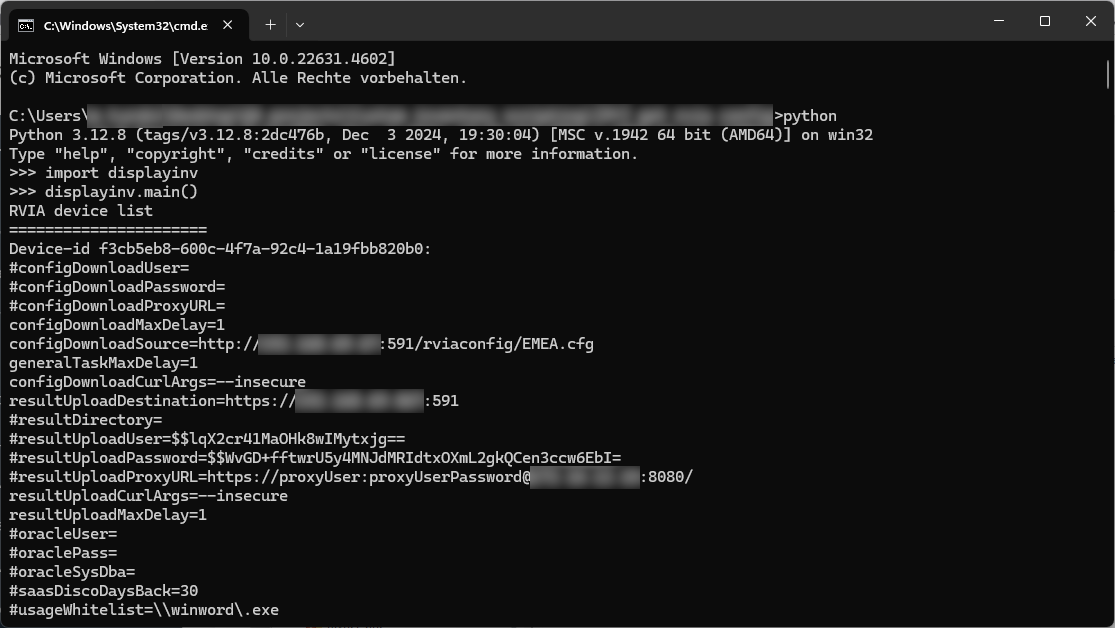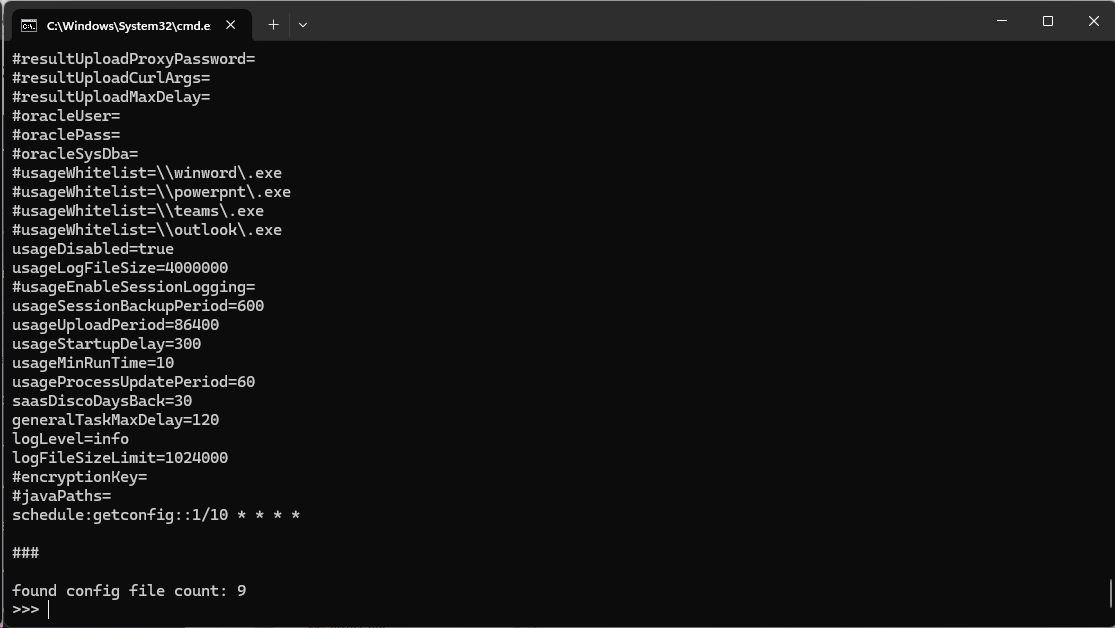Device inventory scripts can be used to collect specific application inventory. First, the key identification details of application existence on a system need to be clarified. Based on the details, decide on the traits to detect while evaluating against version change and application environment mutation. Then, write the inventory script to capture the details from the inventory device.
In this use-case, we capture the RayVentory Inventory Agent (RVIA) configuration from the inventory device. Its presence is good evidence of RVIA deployment.
Supported OS types: Windows, Linux
Program content (inventory script)
def main():
osf = PythonConnector.os_family()
lines = None
if osf == "Windows":
lines = PythonConnector.run("type C:\\ProgramData\\Raynet\\RayVentoryInventoryAgent\\rvia.cfg")
elif osf == "Linux":
lines = PythonConnector.run("cat /opt/rvia/rvia.cfg")
else:
print( "failed to obtain RVIA configuration for unsupported platform" )
return
if lines:
content = "\n".join(lines)
CF = PythonConnector.create_item("RVIAConfig", "rvia.cfg")
PythonConnector.add_property("Content", content, CF)
PythonConnector.add_item(CF)
print( "Collected RVIA configuration inventory" )
else:
print( "failed to read RVIA configuration file" )
main()
API fetching program requirements
•Python 3+
•Requests library (https://docs.python-requests.org/en/latest/)
•RNO API key
•RNO frontend URL
API fetching program (displayinv.py)
import requests
APIKEY = "PUT API KEY HERE"
FRONTEND = "PUT FRONTEND URL HERE"
HEADERS = { "ApiKey": APIKEY }
def obtain_paged(EP):
P = {}
P["count"] = 1000
items = []
while True:
result = requests.get(EP, params=P, headers=HEADERS)
if result.ok == False:
break
objs = result.json()
if objs == None:
return
if len(objs) == 0:
return
items.extend(objs)
lastobj = objs[len(objs)-1]
P["LastId"] = lastobj["id"]
return items
def main():
script_res = obtain_paged(FRONTEND + "/api/v1/InventoryScriptResults")
if script_res == None:
print( "failed to get inventory script results from the frontend (" + FRONTEND + ")" )
return
print( "RVIA device list" )
print( "======================" )
config_file_count = 0
for SR in script_res:
if "class" in SR and SR["class"] == "RVIAConfig" and "deviceId" in SR:
print( "Device-id " + SR["deviceId"] + ": " )
content = None
if "properties" in SR:
for P in SR["properties"]:
if "key" in P and P["key"] == "Content" and "value" in P:
content = P["value"]
break
if content:
print( content )
print( "###" )
else:
print( "empty" )
config_file_count = config_file_count + 1
if config_file_count == 0:
print( "none" )
else:
print()
print( "found config file count: " + str(config_file_count) )
Screenshots

The initial lines of the executed API fetching program. The header is named RVIA device list. Then, each device entry is started with the device id, followed by the configuration file content.

The trailing part of the executed API fetching program. At the end of the listed device entries, the count of displayed entries is written.